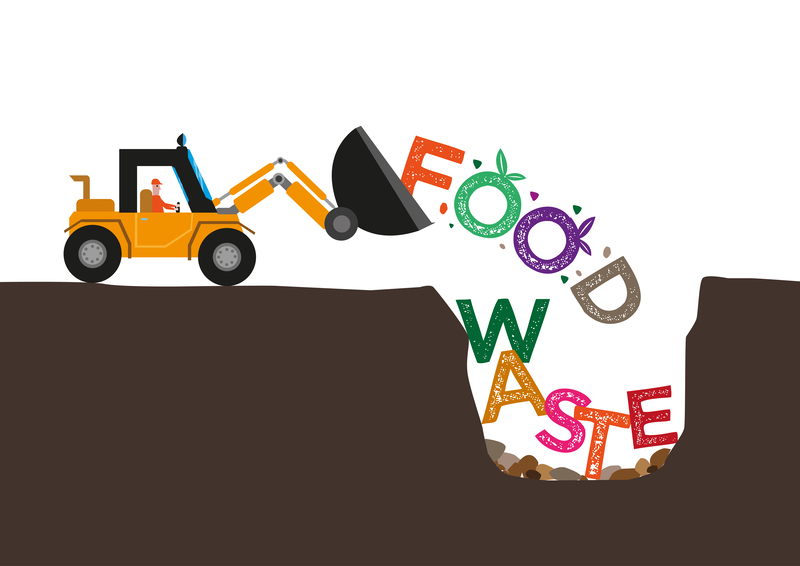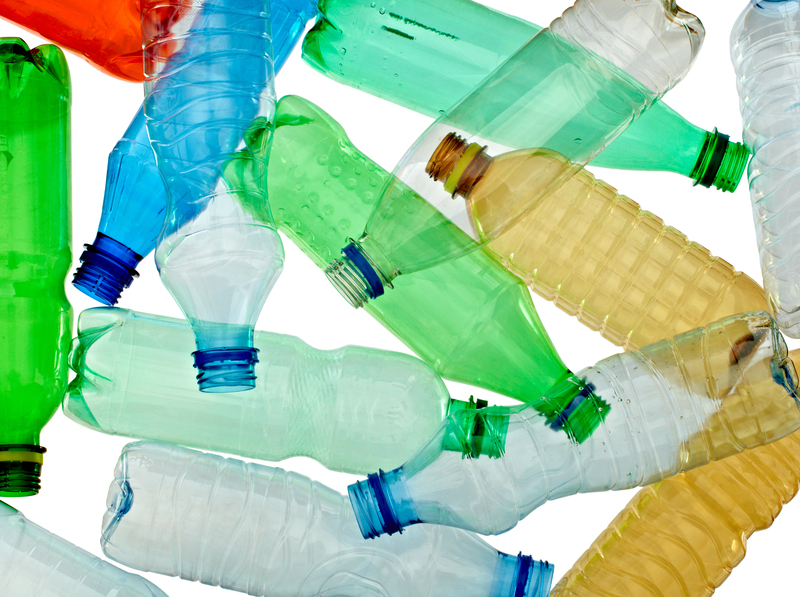Hazardous Waste Explained: A Detailed Overview
Hazardous waste is a critical topic for environmental safety, human health, and global sustainability. While most people have likely heard of the term, fewer understand what constitutes hazardous waste, how it is created, the risks involved, and the processes necessary for proper handling and disposal. In this comprehensive article, we provide an in-depth overview of hazardous waste, focusing on definitions, types, sources, regulations, risks, and safe management practices. If you want to learn how to identify, manage, and reduce hazardous waste effectively, keep reading for everything you need to know.
Understanding Hazardous Waste: Definition and Characteristics
Hazardous waste refers to any material that poses significant threats to public health or the environment due to its toxic, corrosive, ignitable, or reactive properties. Derived from industries, households, laboratories, and healthcare facilities, hazardous wastes are strictly regulated because of their potential dangers.
Key Characteristics of Hazardous Waste
- Toxicity: Materials that are harmful or fatal upon exposure, ingestion, or absorption. Examples include lead, mercury, and certain pesticides.
- Corrosivity: Waste that can destroy metals or living tissues upon contact, such as acids or caustic cleaning agents.
- Ignitability: Substances that catch fire easily or can spontaneously combust, including solvents and fuels.
- Reactivity: Wastes that are unstable under normal conditions and can cause explosions, toxic fumes, or violent reactions. Examples are certain peroxides and cyanide wastes.
For a waste to be classified as hazardous, it must exhibit one or more of these characteristics or appear on official hazardous waste lists maintained by regulatory agencies.

Types of Hazardous Waste
There are several types of hazardous waste, each with unique sources, risks, and disposal protocols. Understanding the varieties helps in safe handling and compliance with regulations.
Listed Wastes
- F-list (Non-Specific Source Wastes): From common manufacturing processes, such as solvents used in cleaning or degreasing.
- K-list (Source-Specific Wastes): Generated from specific industries like petroleum refining, wood preservation, or pesticide manufacturing.
- P-list and U-list (Discarded Commercial Chemical Products): Includes specific chemical products and pharmaceuticals that are considered acutely or non-acutely hazardous.
Characteristic Wastes
- Corrosive Wastes: Such as battery acid.
- Ignitable Wastes: Such as oil-based paints or used solvents.
- Reactive Wastes: Such as waste explosives.
- Toxic Wastes: Including heavy metals and certain pesticides.
Universal Wastes
- Batteries
- Pesticides
- Mercury-containing equipment (e.g. thermometers, thermostats)
- BULB (Lamps) containing hazardous chemicals, such as fluorescent bulbs
Mixed Wastes
- Contain both radioactive and hazardous chemical components.
Proper identification and classification are critical to ensure the safe management of hazardous materials and reduce environmental contamination.
Common Sources of Hazardous Waste
Hazardous waste is generated by numerous sources, both large-scale and small-scale, across various sectors of the economy.
Industrial Sources
- Manufacturing: Chemical plants, paint manufacturers, and electronics production yield a range of hazardous byproducts.
- Petroleum Refining: Produces sludges and wastewater contaminated with toxic substances.
- Mining: Generates waste containing heavy metals and acid mine drainage.
Medical and Healthcare Facilities
- Pharmaceuticals: Expired, unused, or contaminated drugs and chemicals.
- Laboratory Wastes: Including solvents and reactive chemicals.
Households
- Household Cleaners: Bleach, ammonia, and other corrosive substances.
- Pesticides and Herbicides: Residual chemicals from garden activities.
- Electronics: Old batteries, computers, and fluorescent bulbs that contain mercury or lead.
Construction and Demolition
- Asbestos: Found in older building materials.
- Lead Paint: Paint chips and dust from renovation activities.
Being aware of the various hazardous waste sources is the first step in developing responsible management and disposal programs both at home and at work.
Risks Associated with Hazardous Waste
Hazardous waste poses significant risks to human health and the environment. These dangers arise from improper storage, transportation, treatment, or disposal.
Health Risks
- Acute poisoning: Exposure to certain toxins can cause immediate health issues, including burns, respiratory distress, and even death.
- Chronic illnesses: Long-term exposure may lead to cancers, organ failures, reproductive issues, and neurological disorders.
- Occupational hazards: Workers in industries producing hazardous waste are at higher risk for accidental exposure.
Environmental Risks
- Soil contamination: Leaching of hazardous chemicals can render land unusable for agriculture or housing.
- Water pollution: Hazardous substances infiltrating groundwater or surface water threaten ecosystems and drinking supplies.
- Air pollution: Volatile or combustible chemicals can contribute to air quality issues and acid rain.
Proper hazardous waste management is essential to protect both people and the planet from these and other untold risks.
Hazardous Waste Regulations and Legislation
Given the dangers, hazardous waste management is heavily regulated at the international, national, and local levels. Stringent guidelines direct how toxic materials should be handled from generation to disposal--the so-called "cradle-to-grave" approach.
International Frameworks
- Basel Convention: An international treaty designed to reduce movement of hazardous wastes between nations, particularly from developed to less developed countries.
- Stockholm Convention: Focused on controlling persistent organic pollutants (POPs).
United States Laws and Policies
- Resource Conservation and Recovery Act (RCRA): Governs the generation, transportation, treatment, storage, and disposal of hazardous waste.
- Toxic Substances Control Act (TSCA): Regulates the introduction of new or already existing chemicals.
- Comprehensive Environmental Response, Compensation, and Liability Act (CERCLA): Also known as Superfund, mandates cleanup of hazardous waste sites.
European Union Regulations
- Waste Framework Directive: Sets the basic concepts and definitions related to waste management.
- REACH: Regulates chemicals and their safe use.
Failure to comply with hazardous waste regulations can result in severe penalties, both legal and financial.
Hazardous Waste Identification and Labeling
Correct identification and labeling are fundamental to effective hazardous waste management. This enables safe handling and efficient communication across all stages--from generation to disposal.
How to Identify Hazardous Waste
- Consult SDS (Safety Data Sheets): Check product documentation for hazard properties.
- Use chemical test kits when necessary to detect hazardous properties.
- Compare materials with the official lists from local environmental and safety agencies.
Importance of Proper Labeling
- Regulatory compliance: Satisfies legal requirements for workplace safety and waste transport.
- Accident prevention: Minimizes risk of improper handling and exposure.
- Efficient waste processing: Ensures proper routing for treatment, recycling, or disposal.
Storage and Handling of Hazardous Waste
Storing hazardous waste safely is crucial to prevent accidents, leaks, or environmental contamination.
Best Practices for Storage
- Store waste in containers that are compatible with the chemical's properties (e.g., corrosion-resistant for acids).
- Keep containers tightly closed and clearly labeled.
- Use secondary containment (such as spill trays) to mitigate leaks or spills.
- Segregate incompatible wastes--never store acids with bases, or oxidizers with organics.
- Inspect storage areas regularly for leaks, rust, or structural problems.
Handling Precautions
- Provide proper training for anyone involved in hazardous waste management.
- Equip workers with personal protective equipment (PPE), including gloves, goggles, and respiratory protection.
- Maintain emergency response kits in storage areas.
Failure to adhere to these practices can result in dangerous exposures or environmental disasters.
Transportation of Hazardous Waste
The transportation of hazardous waste presents unique challenges requiring strict protocols to reduce the chance of spills, accidents, and exposure.
Transportation Rules and Guidelines
- Only licensed and certified hazardous waste transporters should move hazardous materials.
- Containers must be correctly labeled and placarded according to regulations.
- Shipping papers and emergency instructions must accompany all hazardous waste shipments.
- Vehicle operators should be trained in spill response and emergency procedures.
Treatment, Recycling, and Disposal of Hazardous Waste
After collection and transportation, hazardous waste treatment must neutralize or minimize its harmful properties before safe disposal or recycling.
Treatment Methods
- Physical treatment: Filtration or encapsulation to isolate contaminants.
- Chemical treatment: Neutralization, oxidation, or precipitation to render waste less hazardous.
- Biological treatment: Using microorganisms to break down toxic components (bioremediation).
- Thermal treatment: Incineration at high temperatures to destroy hazardous chemicals.
Recycling Options
- Reclaiming solvents, metals, or other valuable components from waste streams.
- Reusing certain commercial products, such as automotive batteries after refurbishment.
Final Disposal
- Engineered landfills: Hazardous waste is securely buried in lined landfills with monitoring systems in place.
- Underground injection: Injecting liquid hazardous waste deep into geologically stable rock formations.
Improper disposal is illegal and can have catastrophic health and environmental consequences.

Reducing and Preventing Hazardous Waste Generation
The most effective approach to managing hazardous waste is to reduce or prevent its creation altogether. This strategy, known as "pollution prevention" or "source reduction," benefits businesses, communities, and the environment.
Strategies for Source Reduction
- Substitute hazardous materials with non-hazardous or less dangerous alternatives when possible.
- Optimize processes to minimize waste generation (e.g., closed-loop manufacturing systems).
- Adopt better housekeeping practices and regular equipment maintenance to prevent leaks and spills.
- Implement staff training and awareness programs.
- Promote product stewardship from design to end-of-life management.
Reducing hazardous waste at the source is more sustainable and cost-effective than treatment or disposal.
Conclusion: The Importance of Responsible Hazardous Waste Management
Hazardous waste impacts every level of society--from large industries to individual households. Understanding the complexities of hazardous waste, including its identification, dangers, and management, is essential for safeguarding public health and the environment.
By adhering to regulations, employing best practices, and striving to reduce waste at the source, we can collectively minimize the legacy of pollution and ensure a safer, cleaner future for all.
If you manage, generate, or come into contact with hazardous waste, always follow local, national, and international guidelines, and seek professional advice when necessary. Our collective efforts will make a significant difference in hazardous waste management for generations to come.